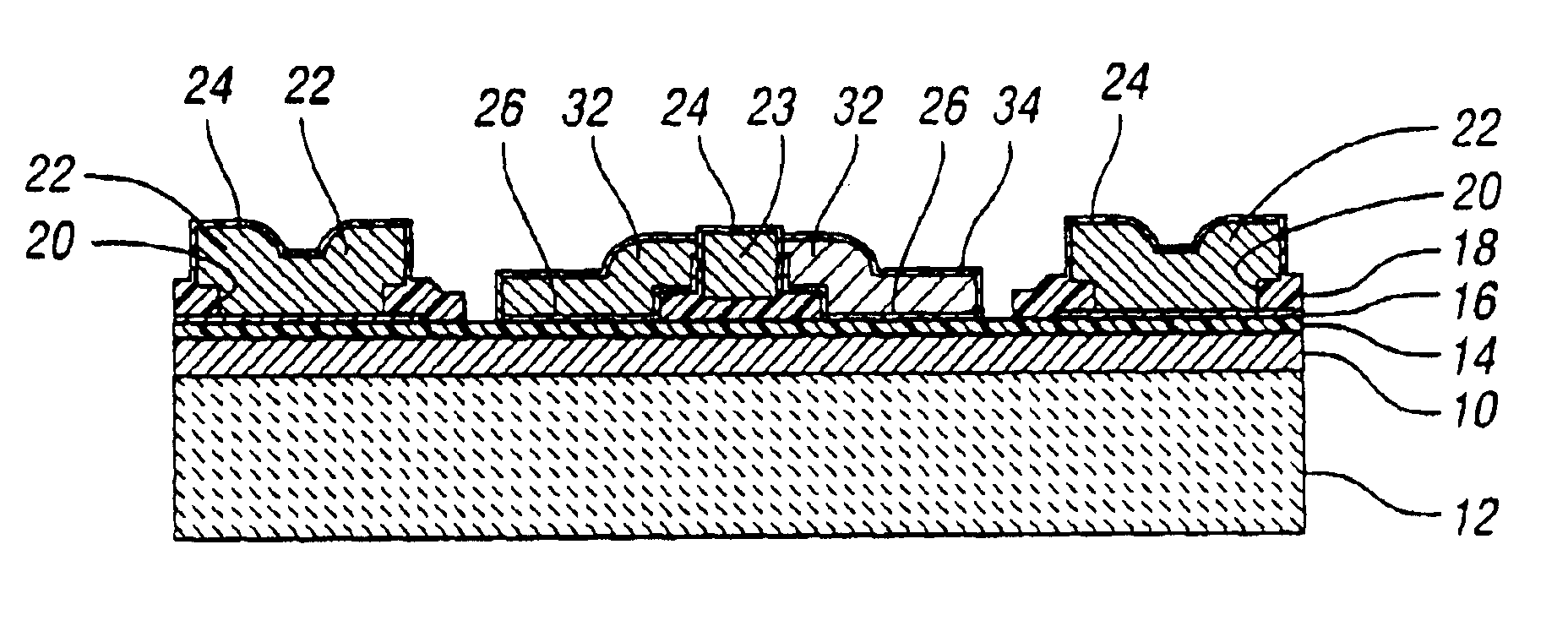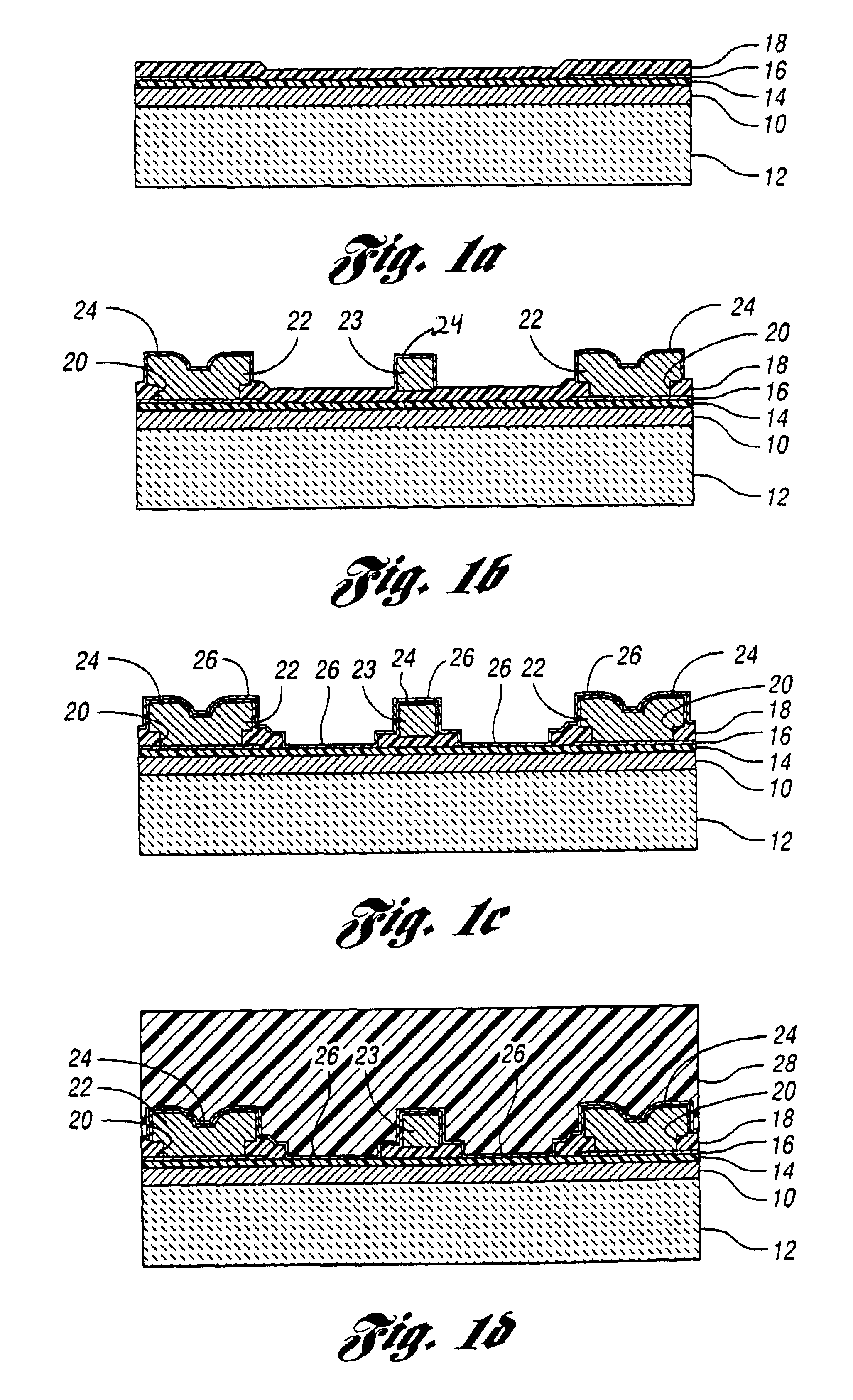Method for making micromechanical structures having at least one lateral, small gap therebetween and micromechanical device produced thereby
a micromechanical resonator and lateral technology, applied in the direction of microstructural technology, microstructure devices, solid-state devices, etc., can solve the problems of consuming a sizable portion of the total sub-system area, devices pose an important bottleneck against the ultimate miniaturization and portability of wireless transceivers, and the gap between the electrodes and the structure of the comb-driven micromechanical resonator is limited by lithography capability
- Summary
- Abstract
- Description
- Claims
- Application Information
AI Technical Summary
Benefits of technology
Problems solved by technology
Method used
Image
Examples
Embodiment Construction
A preferred embodiment for a small-gap, lateral resonator process flow of the present invention is presented in FIGS. 1a-1h. As shown in FIG. 1a, this process starts with a 2 μm thick oxide film 10 (i.e. SiO2) thermally grown on a silicon substrate 12 and a 3000 Å thick film 14 of nitride (i.e. Si3N4) which together serve as an isolation layer. After a 3000 Å thick low stress polysilicon layer 16 is deposited via LPCVD, doped and patterned via reactive ion etching (RIE), a 5000 Å thick layer 18 of sacrificial oxide (i.e. SiO2) is deposited by LPCVD.
As shown in FIG. 1b, vias 20 are patterned into the sacrificial oxide layer 18 by RIE, exposing the underlying polysilicon layer 16 in specific areas to later serve as anchors for eventual structures. A 2 μm thick structural layer of low stress polysilicon is then deposited via LPCVD and patterned also via RIE to form anchor structures 22 and a resonator structure 23 with straight side walls. A 1000 Å thick layer 24 of conformal LPCVD oxi...
PUM
 Login to View More
Login to View More Abstract
Description
Claims
Application Information
 Login to View More
Login to View More - R&D
- Intellectual Property
- Life Sciences
- Materials
- Tech Scout
- Unparalleled Data Quality
- Higher Quality Content
- 60% Fewer Hallucinations
Browse by: Latest US Patents, China's latest patents, Technical Efficacy Thesaurus, Application Domain, Technology Topic, Popular Technical Reports.
© 2025 PatSnap. All rights reserved.Legal|Privacy policy|Modern Slavery Act Transparency Statement|Sitemap|About US| Contact US: help@patsnap.com



